"The cupboard was bare..."
We are no longer building saddle trees, but we have two videos about how Western saddles fit horses available on our westernsaddlefit.com website.
This is what our drying stones look like at the moment.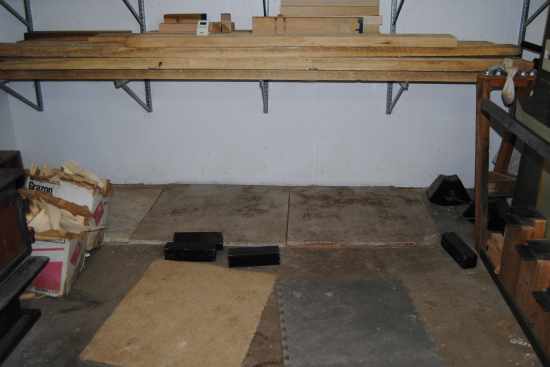
This is what they normally look like.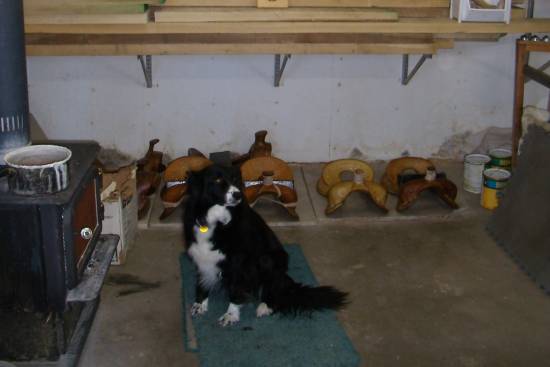
Why the difference? Let me explain…
Rawhide covered saddle trees need to be baby sat – seams pounded down and nails reset daily to twice a day – or you end up with a lumpy, bumpy tree. This means that when we go away, the trees have to be dry enough that they are past the point of requiring daily attention. So we can’t just pick up and go whenever we feel like it. Going away, even for a day or two, affects our work schedule for a week and a half in advance at least. (One of the few drawbacks of being a tree maker…)
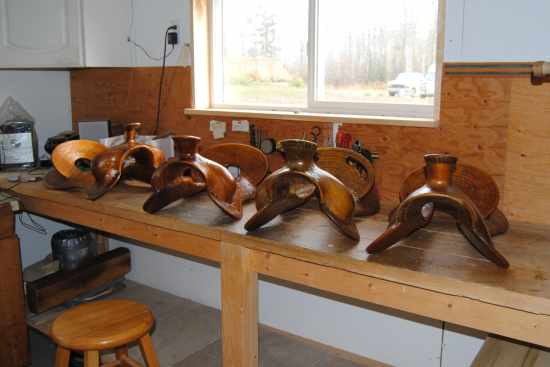
What it also means is that when we get home, all the trees are pretty much ready to varnish, leaving the drying stones bare. But the bench top is full of freshly varnished trees! Here are four of them, from right to left: a Wade, an 11 ½” modified wood post Chuck Sheppard, a 12” wood post Packer and a 13” Modified Association. These trees side by side give a good example of some of the variations in top slope and side shape in swell forks.
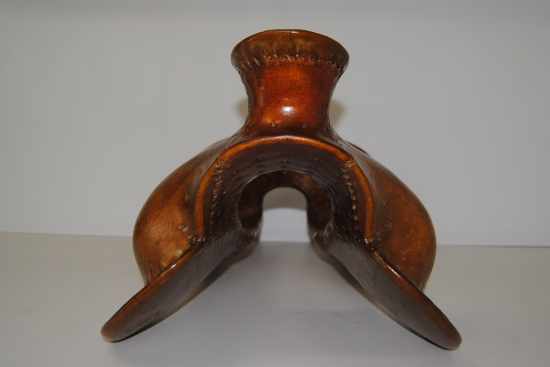
I (Denise) have always thought of the Chuck Sheppard fork as being “discouraged looking”, since its shoulders sag down so far. It doesn’t completely round down into the bars.. It does go in and come back just a little at the bottom, but that is hard to see from a front view. It is easier to see from the back. This tree has an 8 1/8" tall gullet height, which is really tall for a wood post swell fork. That extra height also affects the shape a bit.
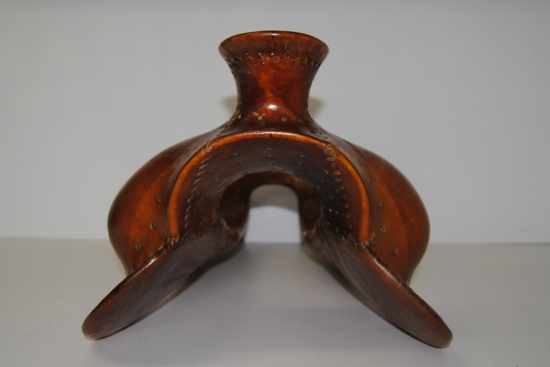
The Packer still has a fair amount of top slope, but nowhere near as much as a Chuck Sheppard. Its sides are similar in shape to the Modified Association in that it comes in under the swell and then goes back out to meet the bar. But because of the extra slope on the top, that isn’t as obvious as on a Modified Association because there isn’t much room under the swell.
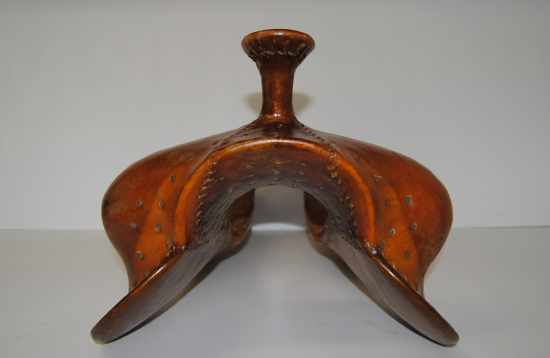
The Modified Association is much flatter over its top with some rounding towards the outside edges. We have seen lots of variations of shape called a Modified Association – some flatter and some with more top slope than ours. All part of the tree makers doing things differently, I guess… The original Association saddle is a bronc saddle used in rodeo and the bars on them are different, made so the saddle sits right over the horse’s shoulders. We have always heard the Modified used to distinguish a saddle made for normal riding from a bronc saddle. But we have recently heard of another definition of the “Modified” part of the Association - using the “Association” name to mean an 8” gullet height and “Modified Association” to mean something with a lower gullet height. We will stick with the definition based on the bar shapes and use specs to define the gullet height, but it is good to remember that other definitions exist, depending on who you’re talking to.
For more information on the different shapes of swell forks, please check out our Swell Forks pages.
